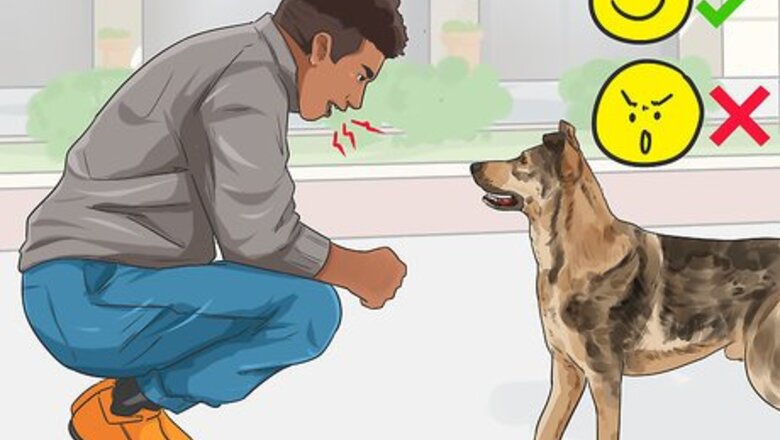
views
Defusing an Aggressive Situation
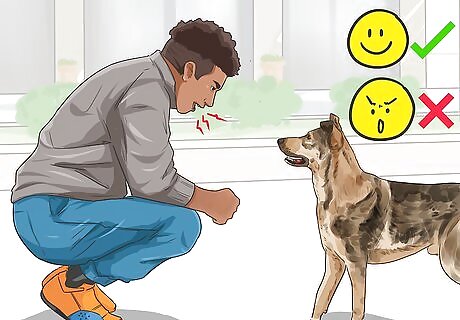
Talk to the dog in a calm voice. You can try to relax your dog by telling them that everything is all right. Use a soothing, calm tone to reassure your dog. The gentleness of your voice may help reduce stress and relax them in a tense situation. Focusing on positive reinforcement and calm leadership from you will ensure that your dog responds reliably to commands. Rewarding calmness will help your dog to be calmer in future. Proactively notice when the dog is being calm, say "good boy/girl" to reinforce the positive behavior.
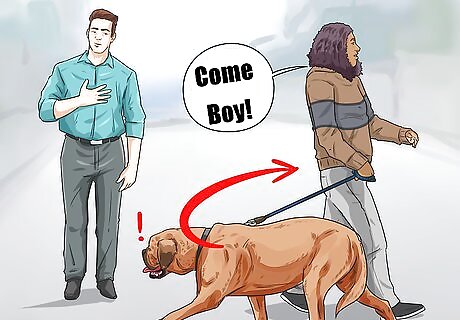
Remove your dog from the situation. If your dog is growling, snapping, or snarling at another person or animal, the best thing you can do is remove them from the situation. Place them in a different room. If you are outside, you can lead them away on their leash. Use commands, such as “come, boy”, to make them follow you away.
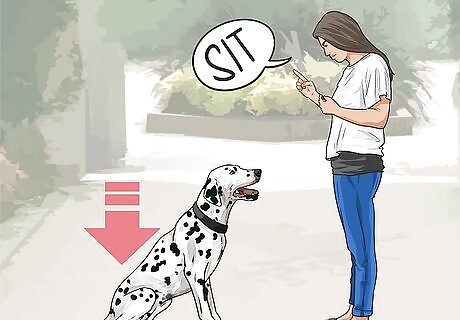
Command the dog to sit. If you have trained your dog to answer to commands, you may be able to distract them from the target of their aggression. Use a command to have them lay down. If they do so, reward them by praising them, petting them, or giving them a treat. At this point, you might also ask them to rollover. If they do so, you have successfully distracted them from their target and do not need to use a physical rollover.
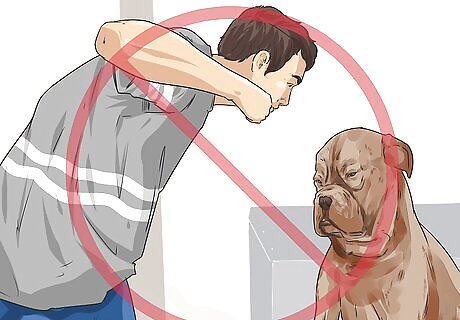
Avoid punishing the dog. Yelling at the dog, jerking their leash or collar, or hitting the dog will not reduce their aggression in a tense situation. These punishments may provoke your dog more. Even if these methods temporarily stop the situation, they can encourage fearful or aggressive behavior later on.
Rolling Your Dog
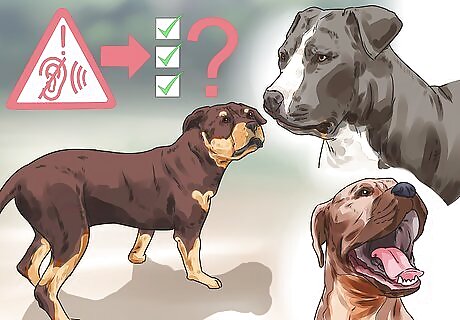
Assess the situation. If you absolutely feel as if there is no other way to calm down your dog, you can try the traditional alpha roll. This should be a situation where the dog will not listen to commands or where you cannot remove the dog from the situation. Yawning, staring, licking their tongue, or tensing their body are signs that a dog might bite. The best thing you can do in this situation is stay still and avoid eye contact until the dog relaxes. An alpha roll may increase your chances of being bitten.
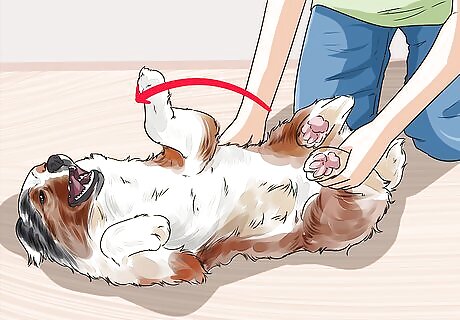
Pin the dog on their side. The goal is to force the dog onto their side. Lean over the dog, and lift their front legs. Gently nudge them until they are on their side. Do not slam the dog against the ground. If the dog is threatening to bite you, do not do this. Your face will be very close to theirs, putting you in a vulnerable position to be bitten. Small dogs can be picked up and rolled over. The larger the dog, the more difficult it will be to roll them over, and the more dangerous it may be to provoke them with a rollover. A submissive dog will voluntarily expose their belly to someone they trust. Dogs who are forced to roll over will often fight back.
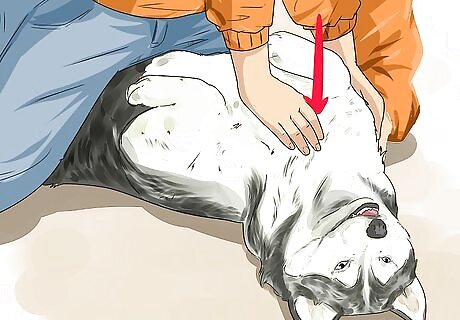
Hold the dog down. Hold them down by placing a flat hand on their chest or neck. Do not squeeze or choke the dog. If you splay your fingers, you can keep them pinned without using much force or pressure. Do not hold a snarling or snapping dog by the muzzle or your hand may be bitten.
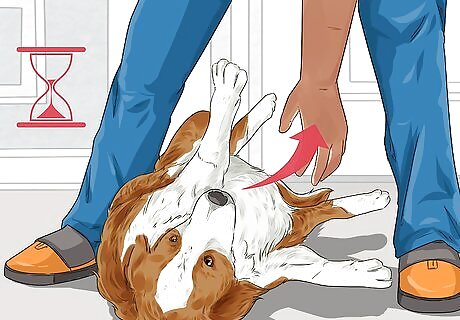
Release them after a few seconds. Contrary to some advice, you should not hold down your dog until they calm down. This will increase their fear, and it could even make them more aggressive. You only need to hold them down for a few seconds. Once you release them, walk away for a few minutes before you interact with your dog again. If your dog urinates, this means that you have frightened them. Release them immediately. Fear is not an effective training tool, and it cause your dog to act unpredictably aggressive in the future.
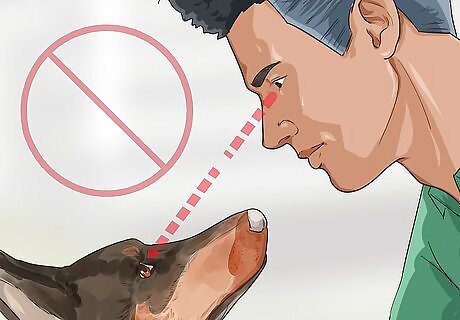
Avoid growling or eye contact. Growling at your dog or making aggressive eye contact will only increase their aggression. It will not calm them down, and it may provoke them into attacking you. It can also damage your relationship with your dog in the long term, as your dog may grow to be afraid of you. Hitting your dog or pulling on a choke chain can also increase aggression in a dog.
Preventing Aggression Through Positive Reinforcement
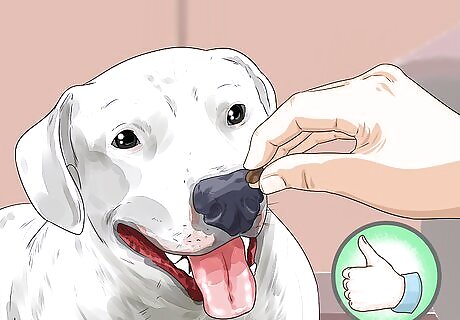
Reward the dog for good behavior. Treats are a powerful training tool that can reward your dog for appropriate behavior. It will train them to associate certain acts with positive emotions. If you give your dog a treat after they successfully complete a command, they will be more obedient when you state this command in the future and more likely to listen to you in aggressive situations. Do not use treats to distract or lure your dog away from a target or when they are in an aggressive mood as this can reward them for that behavior. Use treats only when they are calm.

Praise the dog. If your dog did something right, tell them. Use a happy, gentle tone as you praise their behavior. Be sure to pet them as you do so. The dog will pick up on the signal and understand that this is the appropriate way to act. Shouting or yelling at the dog can increase aggression. If the dog is an aggressive state, yelling at the dog may worsen the situation.
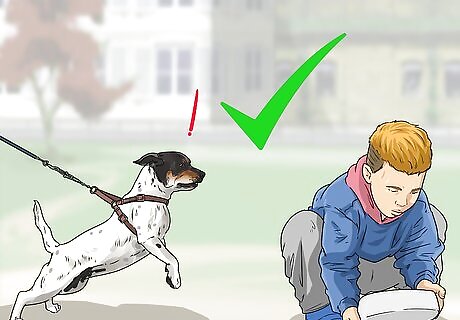
Limit exposure to triggers. In some cases, aggressive behavior cannot be completely controlled. If you know that your dog is aggressive towards strangers or if your dog has a tendency to lunge at small children or animals, you can prevent a bad situation by removing the dog from these circumstances. Confine the dog in a separate room while guests are over. Keep the dog on a leash when going outside of your home. Make sure that children and other animals do not have access to their food bowl or toys.
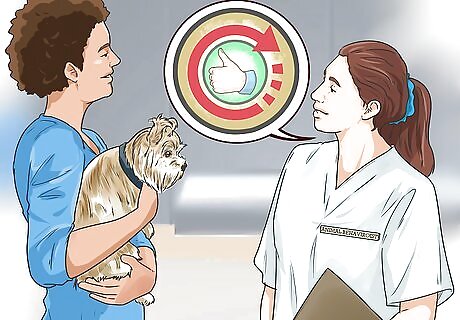
Seek advice from a dog behaviorist. A behaviorist is a special type of trainer that helps teach both the dog and the owner appropriate socializing techniques. This can prevent aggression in the dog and help the owner communicate effectively with the dog. Each behaviorist can tailor the program towards the specific dog and owner. Seek a behaviorist who excels in positive training techniques, as these have been proven to be the most effective. You can ask your vet for a recommendation for a behaviorist. Your vet may also be able to recommend hormone therapy or other ways to manage your dog’s aggression. Aggression is one of the most common reasons that people seek out dog behaviorists.




















Comments
0 comment